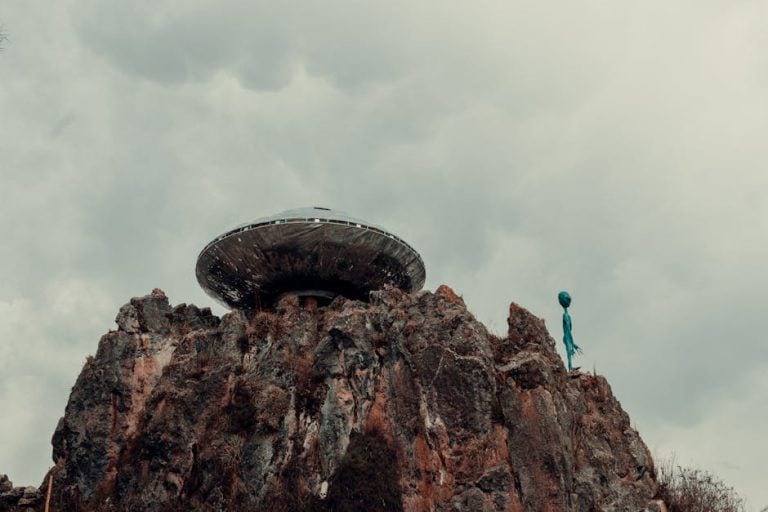Beginner’s Guide to Blue Light Conspiracy Theories
Blue Light Conspiracy Theories continue to captivate the public’s imagination, intertwining elements of science fiction, global politics, and misinformation into a compelling yet unfounded narrative. These theories suggest that blue light emitted from devices or other mysterious sources is wielded by clandestine groups to influence or control the masses. However, experts in the field have debunked these claims, emphasizing that blue light does not possess the power attributed to it in these theories.
Understanding Blue Light Conspiracy Theories
To unravel the intricacies of Blue Light Conspiracy Theories, we should first examine one of their most notable proponents: Serge Monast. A Quebec journalist, Monast gained notoriety in the early 1990s for his elaborate conspiracy theories, with his most infamous claim being Project Blue Beam.
What is Project Blue Beam?
Monast argued that NASA, in collaboration with the United Nations, was masterminding a plot to enact a New World Order. According to him, this elaborate scheme involved using advanced technology to simulate a Second Coming of Christ, aimed at dismantling traditional religions and ushering in a New Age belief system. The theory posits that these deceptions would be projected into the sky using blue light technology.
Monast’s theories are steeped in a fusion of science fiction elements and established conspiracy narratives. Notably, aspects of his claims echo plots from episodes of Star Trek, such as The God Thing and Devil’s Due. Yet, the imaginative framework of these theories stands largely on shaky ground, lacking credible evidence and being widely regarded as fictional.
The Role of NASA
In Monast’s narrative, NASA plays a key role in orchestrating these phantoms of control. In reality, NASA is dedicated to space exploration, scientific research, and technological innovation. The idea that NASA would divert its resources for global mind control has been thoroughly debunked by experts across various disciplines.
The Notion of a New World Order
The concept of a New World Order appears prominently in many conspiracy theories, suggesting that an elusive clique of powerful elites aims to dominate global affairs. Monast’s theory asserts that this secretive group would leverage Project Blue Beam to manipulate public perception. Nevertheless, no substantive evidence supports the existence of such a global conspiracy.
Why Do These Theories Persist?
Despite being debunked time and again, Blue Light Conspiracy Theories retain their allure, primarily due to their gripping storylines. These tales often flourish on social media platforms, where misinformation can spread like wildfire. The underlying fears of technological overreach and global manipulation tap into deep-seated anxieties, making these theories particularly enticing for certain audiences.
The captivating narratives of Blue Light Conspiracy Theories, including Project Blue Beam, highlight the necessity for critical thinking. It is crucial to scrutinize extraordinary claims that lack solid grounding in reality. By understanding the origins of these narratives, we can better defend ourselves against the onslaught of misinformation that permeates today’s digital landscape.
Origins and Evolution of Blue Light Conspiracy Theories
The seeds of Blue Light Conspiracy Theories can be traced back to the mid-20th century, with key figures like William Guy Carr paving the way for modern conspiracy narratives. A Canadian naval officer and author, Carr became known for his works exploring secret societies and global conspiracies. His writings laid the foundation for many contemporary conspiracy theories, including those involving mysterious technological machinations.
The Influence of William Guy Carr
Carr’s seminal work, Pawns in the Game, argued that secret societies manipulated global events to facilitate the establishment of a New World Order. This idea resonated with later theorists, like Monast, who expanded upon Carr’s themes by asserting that these shadowy powers would wield advanced technology to control public perception.
The Impact of Science Fiction
Science fiction has also played a significant role in shaping these conspiracy theories. Monast’s Project Blue Beam mirrored elements of various stories in the genre, particularly those found in Star Trek. For instance, Gene Roddenberry’s unproduced screenplay The God Thing and the Next Generation episode Devil’s Due both feature themes involving deceit and manipulation of belief systems. Such fictional narratives provide fertile ground for Monast’s assertions regarding NASA’s purported schemes.
Technology and New Age Religion
The ultimate aim of Monast’s conspiracies was to replace established religions with a unified New Age belief system. This new ideology, as proposed in the theory, would be imposed on humanity through stunning blue light illusions projected across the sky. This narrative echoes deep-seated fears about the loss of personal and religious autonomy.
Blue Light Conspiracy Theories in the Age of Social Media
The modern digital landscape has propelled Blue Light Conspiracy Theories into the mainstream. Platforms like TikTok and Twitter (now X) function as amplifiers for these narratives, where viral posts and videos gain momentum rapidly.
Misinformation Surge: The Maui Wildfires
A striking example of this phenomenon emerged during the recent wildfires in Maui. Social media users propagated claims that Directed Energy Weapons (DEWs) caused the fires, pointing to footage of green lights in the sky as evidence. However, these lights were ultimately identified as being captured months prior from a Chinese weather satellite—nothing sinister at all.
The Role of Sensationalism
Sensationalist media coverage can inadvertently fuel the spread of these conspiracy theories. By focusing on dramatic content, some outlets amplify unfounded claims, creating a feedback loop in which conspiracy theories gain more visibility and credibility.
Debunking Blue Light Conspiracy Theories
An in-depth review reveals how Blue Light Conspiracy Theories often rest on a house of cards built on deceptive claims and distorted evidence.
False Claims and Scientific Refutation
Many conspiracy theories arise from a kernel of truth but quickly devolve into absurdity. Take, for example, the claim that only blue objects survived the Maui wildfires due to laser technology. Experts debunk this narrative, noting that a laser sufficiently powerful to create such effects would impact all colors alike.
Expert Insights
Experts, including professionals from the Federal Emergency Management Agency (FEMA), clarify the realities behind these conspiracies. For instance, they have emphasized that Operation Blue Roof, which involves distributing blue tarps to secure storm-damaged homes, is unrelated to the fires at all.
Scientific Evidence Against Misconceptions
Before-and-after satellite images provide compelling evidence against these conspiracy claims. Aerial footage from credible sources reveals that a variety of colored objects survived the wildfires. Moreover, the belief that blue light objects are impervious to damage lacks scientific reasoning, as lasers affect materials based on their properties, not merely their color.
Conclusion
At Yawnder, we underscore the vital importance of reliable information amid a digital age rife with conspiracy theories. Our commitment to enhancing sleep quality parallels the quest for truth in a landscape filled with disinformation. As we analyze myths and misconceptions—whether regarding sleep products or bizarre conspiracy theories—we strive to deliver accurate, evidence-based insights.
We invite you to explore our educational resources and discover tailored advice on improving your sleep environment. By fostering a culture of inquiry and valuing factual information, we can work together to navigate a world overwhelmed by speculation and misinformation. Let’s prioritize verification and reliability as we seek out trustworthy sources for our health and well-being.


















